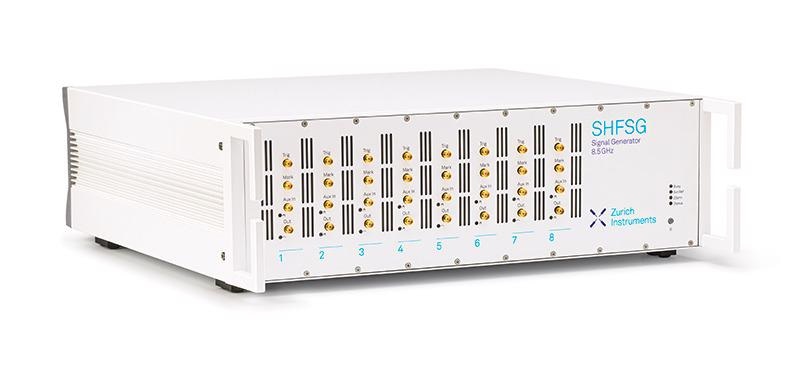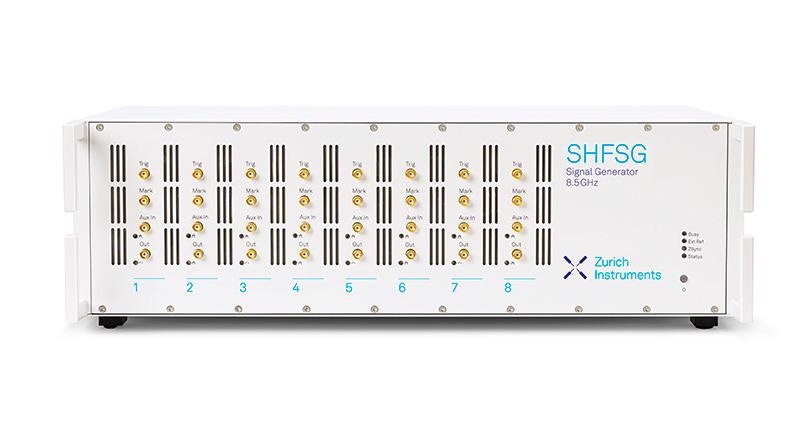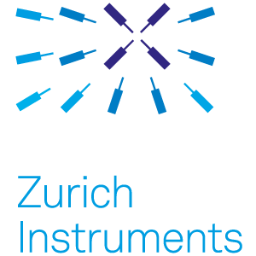As quantum computing continues to advance, so does the need for supporting technologies. With IBM having announced a 65 qubit machine1 and the availability of software development kits and cloud access to quantum machines, the tantalizing promises of the numerous applications of quantum computing seem closer than ever.2

However, using the power of a quantum computer means being able to control the qubits using a signal generator. A signal generator can be used to program pulse sequences to act as a control device that can change the state of a qubit on demand, forming the basis for logical operations. For this purpose, Zurich Instruments has developed the first solution for qubit control on the market, the SHFSG Signal Generator.
SHFSG Signal Generator
The Zurich Instruments SHFSG Signal Generator can be used to generate freely programmable pulse sequences, specifically designed for controlling superconducting and spin qubits.3 At present, these types of qubits are used in some of the most common quantum computer designs. There are hopes that long coherences times offered by superconducting qubits provide one of the most promising architectures for larger systems.
A single SHFSG can control a small qubit set-up and a few synchronized systems are capable of controlling systems in excess of 100 qubits. The SHFSG simplifies the control and interfacing process with its freely available LabOne software, which has driver compatibility with Labber and QCoDeS. There is also API support for Python, C/C++, MATLAB®, LabVIEW™ and .NET.
The SHFSG has options for 4 or 8 analog outputs for qubit control. The device is an integral part of the Zurich Instruments full Quantum Computing Control System.4 The QCCS is a modular system with the flexibility for customization for any application and is designed to minimize the effort associated with creating control processes and system calibration. All of this streamlines the process for working on research applications for quantum computing.
Signal Clarity
Crucial for quantum computing applications, the SHFSG is designed for high-fidelity signal production. It generates microwave signals with a spurious-free output bandwidth of 1 GHz for short pulse generation. The variable carrier frequency is up to 8.5 GHz. Typically, generating such signals would be a multi-step process involving arbitrary waveforms generators, microwave signal generators and mixer circuits. By bringing them together in a single box and using a superheterodyne frequency conversion technique, there is no need for calibration routines, which can also be another source of error.
The superheterodyne technique used in the SHFSG also has advantages for signal quality. It allows for better linearity and fewer spurious tones when compared to standard IQ-based mixer methods, while also achieving high output powers. The output signal stability is very high with low phase noise and low timing jitter across the full frequency range.
As part of the QCCS, the SHSFG can be integrated with fast feedback and error correction protocols. This includes feedback methods such as active reset and quantum error correction that can be connected through the ZSync interface. For quantum computing, where the qubits are inherently fragile and unstable, particularly with increasing architecture sizes, minimization of errors and error correction is essential to the successful completion of algorithms.

Quicker Computation
Improvement in error correction helps reduce computation times but, as a single box system, the SHSFG system also offers time savings in several other ways. One of these is the reduction in system maintenance times and elimination of the need to calibrate several different signal generation sources.
The SHSFG minimizes memory usage for complex signal generation, which reduces the overall communication time within the instrument and, therefore, improves measurement times. For larger quantum computers, the communication time is typically a bottleneck in the tune-up time. This makes the SHSFG a fully scalable, efficient solution for quantum computing control of architectures of any size.
The PQSC can synchronize multiple SHFSGs and has a communication latency of less than 100ns.5 Clock speeds of 10 or 100 MHz can be used with either external or internal triggering. Each channel has its own trigger input that can be connected via an SMA connection.
Zurich Instruments has designed this pulse sequence generator in collaboration with some of Europe’s leading groups to ensure that all aspects of the device design has been tailored to real research applications.
Simplify and streamline measurement control for laboratory set-ups with the first commercially available quantum computing control system and find what new possibilities reliable generation of complex pulse sequences could do for your research.
References and Further Reading
- Cho, A. (2020) IBM promises a 100 qubit quantum computer, https://www.sciencemag.org/news/2020/09/ibm-promises-1000-qubit-quantum-computer-milestone-2023#:~:text=IBM's%20current%20largest%20quantum%20computer,run%20on%20different%20quantum%20computers., accessed 2nd April 2021
- IBM (2021) Quantum Computing, https://www.ibm.com/quantum-computing/, accessed 2nd April 2021
- Zurich Instruments (2021) SHSFG, https://www.zhinst.com/europe/en/products/shfsg-signal-generator, accessed 2nd April 2021
- Zurich Instruments (2021) QCCS
- Zurich Instruments (2021) Programmable Quantum Systems Controller, https://www.zhinst.com/europe/en/products/pqsc-programmable-quantum-system-controller
Read more from Zurich Instruments

This information has been sourced, reviewed and adapted from materials provided by Zurich Instruments AG.
For more information on this source, please visit Zurich Instruments AG